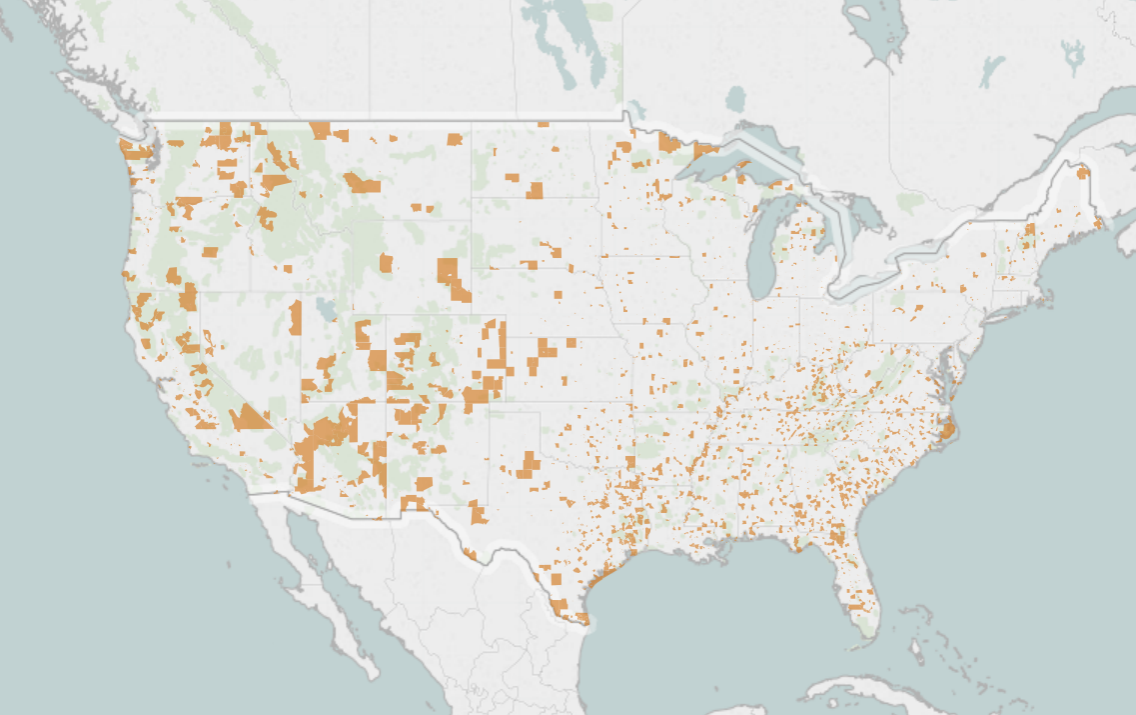1. What is the Opportunity Zones program and where does it target?
Enacted late last year as part of the federal tax overhaul, the Opportunity Zones program provides tax incentives to developers who invest in historically distressed neighborhoods throughout the U.S. There are 8,700 communities that have been designated as Opportunity Zones.
In New York City, there are 306; Los Angeles County has 274; Chicago Cook County, 181; and Miami-Dade County has 67. Created by Republican Sen. Tim Scott of South Carolina and Democratic Sen. Cory Booker of New Jersey, it is intended to spur investment in places institutional money might otherwise overlook. That development in turn, would help the communities and businesses.
2. How would a developer benefit?
By far, the biggest advantage is that it allows investors or developers to defer — and possibly forgo — paying capital gains taxes, or taxes resulting from the sale of certain types of assets. Banks and lenders will also be more likely to now invest in these projects and areas because of the incentives. One unique attribute is that the program also encourages new construction, providing the biggest tax break to investors who keep their money in these zones for at least 10 years.
Opportunity Zones maps: New York | Miami | Los Angeles | Chicago
Developers who already have projects planned in these newly carved-out zones also stand to benefit enormously, experts say. In some cases, massive projects such as the LeFrak and Soffers’ $4 billion project in North Miami, called SoleMia, just happen to fall in the Opportunity Zones and could potentially qualify for this government program. A controversial planned mega-project in South Los Angeles dubbed The Reef also falls into a designated Opportunity Zone. The development, proposed by Ara Tavitan, would span 1.66 million square feet and include 1,444 condominium and apartments units, 152,000 square feet of retail space and 72,000 square feet of signage.
3. What kind of projects will we start seeing and who can invest?
That’s tough to say. The guidelines are written very broadly so almost any type of project can qualify, albeit with a few exceptions: private or commercial golf courses, massage parlors, along with tanning salons and gambling facilities would not be permitted, to name a few. Experts say multifamily properties, warehouses and self-storage facilities might make the most sense, because the program encourages investors to hold properties for at least 10 years.
4. What are these $500M Opportunity Zone funds recently launched?
It is important to note that investors can’t put money directly into a specific project or business in these zones. Instead, they have to invest in what are called Qualified Opportunity Funds. Those requires 90 percent of the investment remain in designated areas, either via properties or businesses.
Big money is digging Opportunity Zones. Arlington, Virginia-based hedge fund EJF Capital as well as the New York-based real estate company RXR Realty have both launched funds seeking to raise at least $500 million. RXR already has a few development projects in New York locations like New Rochelle and Glen Cove, which would be eligible for the tax benefit, according to an investor presentation cited by Bloomberg.
Goldman Sachs and PNC Financial Services Group are also exploring ways to take advantage of the Opportunity Zones program. It is unclear exactly where these funds will invest because they likely won’t deploy capital until further guidance from the government, which is expected in the coming months.
5. Are there potential downsides for developers?
There is still a lot of uncertainty around this program, but the big question seems to be whether this tax break will be enough to encourage development. Projects in low-income areas can be challenging, and if the underlying economics aren’t there, how much is a capital gains tax break really going to help? That’s likely the question that all developers are facing. But others say these tax breaks make real estate at a time of rising interest rates. Plus, sophisticated investors like Goldman Sachs are already pouring money into developments in low-income areas, so large institutional money might not be taking that big of a risk with these projects.
6. Where do we go from here?
There are still a lot questions, and everyone is waiting on more guidance from the federal government. It was expected to come out around Labor Day. The IRS and the U.S. Treasury Department now says these rules will be released in the coming months, along with more detail on which projects will qualify. When that happens, more Opportunity Funds, or investment vehicles for Opportunity Zone projects, will likely start popping up. Likewise, developers should start proposing new projects, especially in areas where there is already development taking place. No large-scale project has yet to take advantage of program, but some developers say they’re interested in setting up Opportunity Funds, and Richard LeFrak is considering changing some of the project mix of his planned SoLe Mia development in South Florida because of the initiative.
